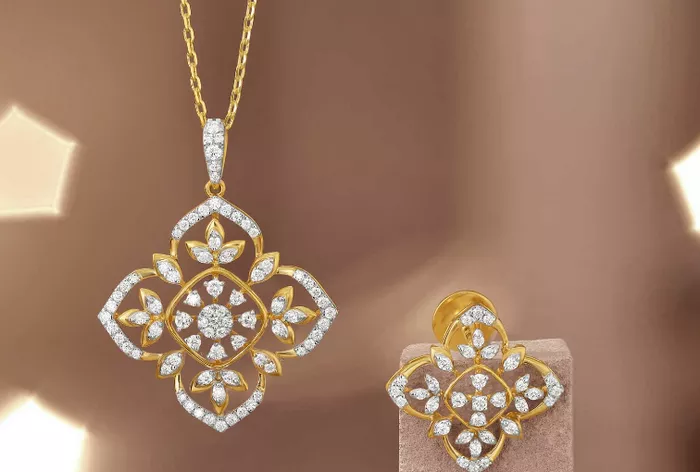The hamsa pendant, also known as the Hand of Fatima or the Hand of Miriam, is a talismanic symbol found across various cultures, particularly in the Middle East and North Africa. Its unique hand shape, often adorned with intricate designs and symbols, has made it a popular accessory in contemporary jewelry, but its significance goes far beyond mere aesthetics. The hamsa serves as a protective symbol, a representation of blessings, and a reminder of faith. This essay delves into the origins, cultural significance, and evolving meanings of the hamsa pendant, exploring its role in various societies and its continued relevance in today’s world.
Historical Background
The hamsa pendant has roots that trace back to ancient civilizations, with its earliest known appearances in the cultures of Mesopotamia. The symbol is often associated with various deities, particularly those related to fertility and protection. Over the centuries, the hamsa has been adopted by several religions, including Judaism, Islam, and Christianity, each attributing its own unique significance to the symbol.
In Jewish tradition, the hamsa is often linked to the figure of Miriam, the sister of Moses, and is viewed as a protective symbol against the “evil eye.” The evil eye, a malevolent glare believed to cause harm or misfortune, has been a concern in many cultures, leading to the widespread use of amulets and talismans for protection. The hamsa’s hand shape is thought to deflect negative energy, while its open palm represents receptivity to blessings.
In Islamic tradition, the hamsa is referred to as the Hand of Fatima, named after Fatima, the daughter of the Prophet Muhammad. It symbolizes purity, patience, and faith, embodying the virtues that Fatima is celebrated for. The hamsa is often adorned with decorative motifs, including floral patterns, which enhance its aesthetic appeal and spiritual significance.
See Also: What Is the Significance of a Pendant?
Symbolism of the Hamsa
The hamsa pendant is rich in symbolism, each aspect of its design carrying meaning. The open hand shape itself is a symbol of protection, while the five fingers represent the five pillars of Islam or the five books of the Torah, depending on the cultural context. The number five is significant in both religions, symbolizing strength and faith.
Additionally, the eye motif, often found within the hamsa, serves as an extra layer of protection against the evil eye. This eye is sometimes depicted as a blue or green orb, believed to have special powers to ward off negativity. The hamsa’s protective qualities are not merely superstitions; they reflect a deep-seated cultural belief in the need for spiritual safeguarding in an unpredictable world.
Furthermore, the hamsa is also interpreted as a symbol of unity and the interconnectedness of all life. It transcends individual beliefs, bridging gaps between different cultures and faiths. The shared reverence for this symbol underscores its role as a universal emblem of hope and protection.
Cultural Variations
While the hamsa pendant is predominantly recognized in Jewish and Islamic contexts, its variations can be found across various cultures. In Hinduism, for example, a similar hand symbol known as the “Abhaya Mudra” represents fearlessness and protection. This demonstrates how hand symbols are prevalent across different spiritual traditions, each carrying its unique meaning while resonating with common themes of safeguarding and benevolence.
In Mediterranean cultures, the hamsa is often referred to as the “Hand of Fatima” or “Khamsa,” a name derived from the Arabic word for five. It is not uncommon to see this symbol in art, architecture, and home decor, signifying its cultural pervasiveness. Its adaptability has allowed it to transcend geographic boundaries, making it a symbol embraced by diverse communities worldwide.
The hamsa pendant has also become a fashion statement, with designers incorporating it into contemporary jewelry pieces. This evolution from a purely spiritual symbol to a fashionable accessory highlights the dynamic nature of cultural symbols, illustrating how meanings can adapt over time while retaining their foundational significance.
The Hamsa in Modern Society
In recent years, the hamsa pendant has gained popularity in Western culture, where it is often associated with good luck and positive energy. Many individuals wear it as a personal talisman, seeking its protective qualities and positive vibrations. This modern reinterpretation, however, raises questions about cultural appropriation and the commodification of spiritual symbols.
The use of the hamsa in fashion can sometimes overlook its profound historical and spiritual significance. As individuals adopt the hamsa for personal or aesthetic reasons, it becomes essential to recognize and respect its origins. Engaging with the symbol in an informed and respectful manner can foster a greater understanding of the diverse cultural narratives it embodies.
Moreover, the hamsa pendant has found its way into various spiritual practices, often being used in meditation or healing rituals. Practitioners may incorporate the hamsa into their spiritual journeys, invoking its protective qualities and seeking its blessings. This resurgence in spiritual practices demonstrates the timeless relevance of the hamsa, as individuals continue to seek connection and protection in an increasingly complex world.
Conclusion
The hamsa pendant, with its rich history and multifaceted meanings, stands as a powerful symbol of protection, faith, and unity. Its evolution from an ancient talisman to a contemporary fashion accessory underscores the dynamic nature of cultural symbols, reflecting changing societal values and beliefs. As individuals continue to embrace the hamsa, it is crucial to approach it with respect and an understanding of its diverse cultural significance.
Whether worn for protection against the evil eye, as a reminder of faith, or as a connection to a larger spiritual community, the hamsa pendant remains a potent symbol that resonates across cultures and generations. In a world where the search for meaning and connection is more vital than ever, the hamsa serves as a beacon of hope, reminding us of our shared humanity and the universal desire for protection and blessings.

